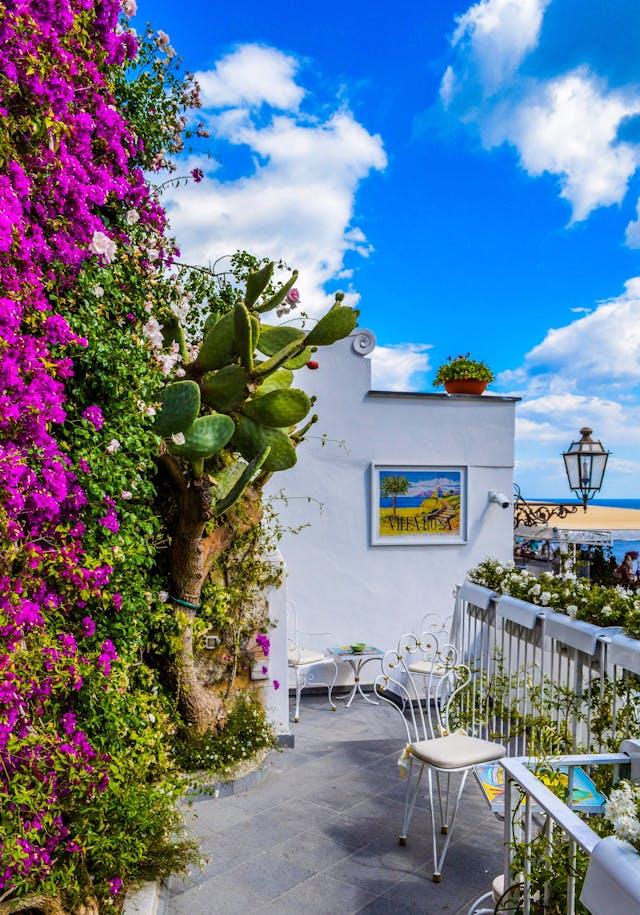
All these are made for people who have very little space but want to pursue gardening. It helps in producing fresh produce, flowers, and herbs in a limited space.
This article will help you with a few tips in small-space gardening that you can follow to have a flourishing garden in your limited space.
Vertical Gardening: Using a frame made of sticks and poles
Don't just plant in the soil. You can also grow climbing plants like cucumbers, beans, and peas on walls, railings, or frames. You can even hang baskets with trailing plants like strawberries or cherry tomatoes. This is a fantastic way especially if you have a small space. Here are some tips for using sticks and poles in your garden:-
Choose the best fit for support:
Pick the support that matches the type of plant you're growing. Big and heavy plants like tomatoes need strong supports like wooden or metal stakes. Plants that climb, like beans or cucumbers, can grow on trellises or arbors.-
Install supports early:
It's a good idea to put in the supports before you plant your garden. This way, you won't harm the roots or disrupt the plant later. If you're using trellises, attach them securely to a wall or fence, making sure they can hold the weight of the plants.-
Train plants to go up the supports:
As your plants grow, gently tie them to the support structure without hurting them. This helps them grow upwards.-
Harvest carefully:
When it's time to pick your plants, be gentle and avoid harming the plant or support. Use sharp scissors or pruning shears to cut the fruit or vegetables from the plant.Growing in boxes above the ground and pots
If you have a small space and want to grow plants, you can use raised beds and containers. Here are some tips for growing in them:-
Choose the right container:
Make sure it's the right size for the plants you want to grow. Containers should have holes at the bottom to let water drain out, and raised beds should be at least 6 inches deep for roots to grow.-
Use fertile soil:
Use good-quality soil with lots of nutrients because plants in containers and raised beds can't get nutrients from the ground. You can combine special soil for pots with compost.-
Water your plants regularly:
Plants in containers and raised beds can dry out fast, so check the soil every day and water it when it's dry to the touch.-
Try companion planting / Planting together:
This means planting different plants together that help each other. For example, planting herbs like basil and cilantro with vegetables can keep away pests and make the food taste better.Choosing the right spot:
Choosing the right place is crucial for a successful small-space garden. It sets your garden up for success and enrichment. When choosing a spot, you need to think about these things:-
Choose a spot with sunlight:
Most veggies and herbs need 5-6 hours of direct sunlight every day to grow well.-
Think about the right place for water:
Gardening needs watering, so make sure you can easily get to water. And a regular supply of water is ensured for the plants.-
Wind check:
Wind can dry out plants and hurt them. If your spot is windy, you might need to put up something to block the wind or use a cover to protect your plants.-
Fertile soil:
Healthy soil is important for healthy plants. Look for a spot with soil that has a lot of organic stuff in it and the right pH for your plants.Choosing the best types of vegetables that work well in pots and raised garden beds
Many vegetables work well in small gardens grown in pots and raised beds. By choosing the right types and taking good care of them, you can have a successful and enjoyable small garden.-
Peppers:
Small pepper varieties are suitable for container gardening. They need sunlight and warmth.-
Spinach:
Spinach is another leafy green that's good for small gardens. It's full of nutrients and best to plant in early spring or late fall.-
Lettuce:
Lettuce is a great choice for small gardens because it doesn't need much space and grows quickly. You can pick individual leaves for your salads as you need them.-
Herbs & Leafy Greens:
Herbs like basil, parsley, cilantro, and thyme are excellent for small gardens. Besides lettuce and spinach, you can also grow other leafy greens like kale, chard, and collard greens.-
Radishes & Tomatoes:
Radishes grow fast and can be harvested in a few weeks in containers or raised beds. Tomatoes are popular for small gardens, but you need a big container and support for them.-
Beans:
Beans need warmth and support to climb. Choose bush varieties for pots and pole varieties for trellises.Conclusion:
In summary, successful small-space gardening involves careful planning and consideration of key factors. Selecting the right plants can make a big difference in a limited area. Equally important is choosing the best location, ensuring it receives sufficient sunlight, proper drainage, and protection from strong winds. Additionally, using healthy soil enriched with organic matter is essential for plant growth. By paying attention to these details, you can create a thriving and productive small garden, even in confined spaces.
Article
Be the first comment
Elite Article













